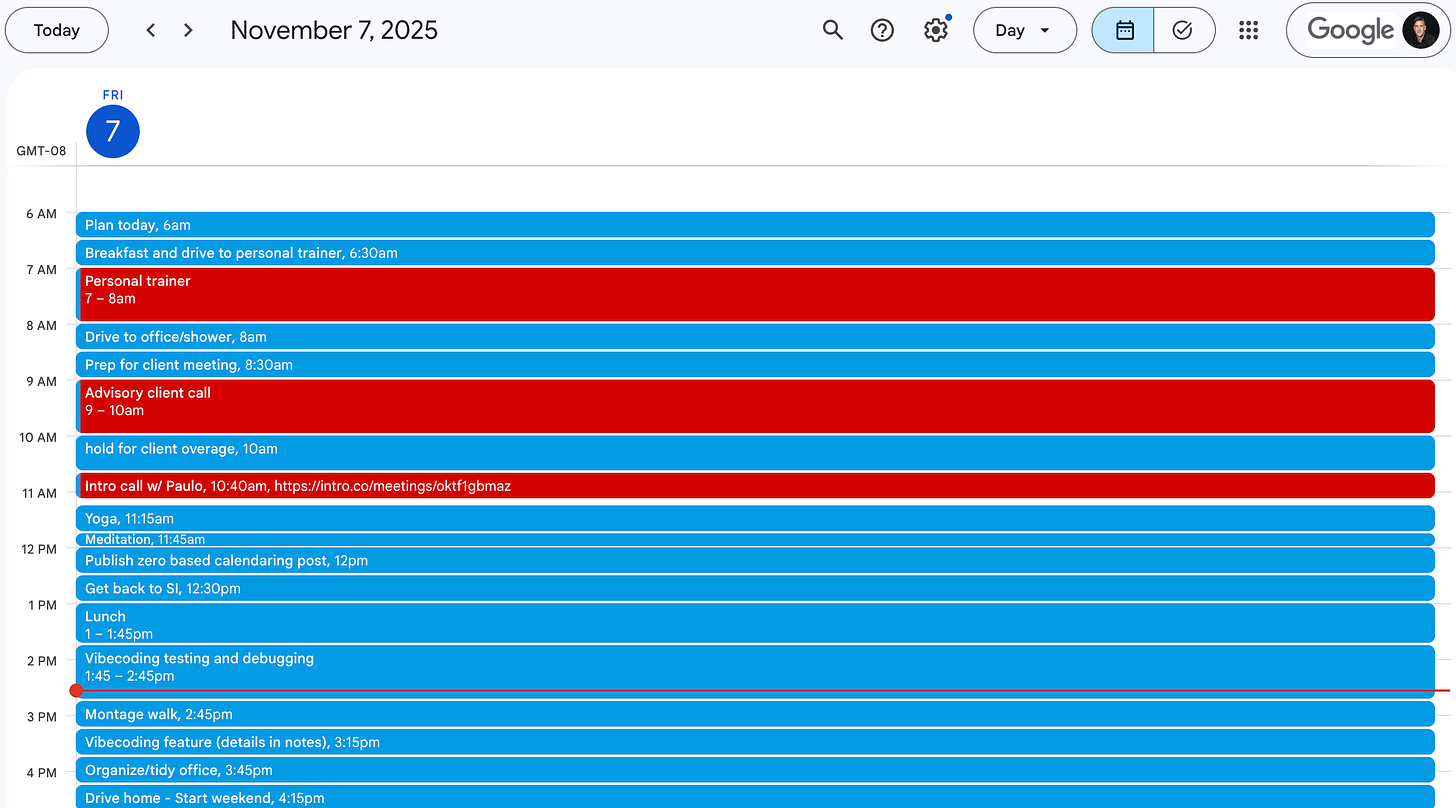How Zero-Based Calendaring Changed the Way I Work (and Feel)
You know those days that seem to vanish in a blur of emails, meetings, and “urgent” fires? By the time it’s quiet enough to breathe, you realize you’ve been busy all day without actually accomplishing what mattered. You didn’t move your body, your to-do list got longer, and you’re left wondering where the time went. Those are the days that used to drain me, until I started using zero-based calendaring.
Zero-based calendaring has been a game changer for me. Instead of letting the day fill up reactively, I start each morning by designing it intentionally. Each hour has a purpose, and that simple act of planning brings a surprising sense of calm and control. I only block my workday, but that includes everything from deep work and meetings to exercise, meditation, and other activities that keep me at my best.
I first heard about zero-based calendaring from Nir Eyal, who calls it time boxing and describes it as one of the most powerful ways to take control of your time and attention. One of the key benefits he highlighted is that it makes distraction visible. If you get pulled away by social media or something else, you can see exactly what it cost you—the task or intention you planned but didn’t complete. That simple awareness can be a powerful motivator to stay focused.
While Nir’s version helped me protect my focus, Cal Newport offered something I needed even more: flexibility. In a book I bought to help my daughters, How to Get Straight A’s, Newport points out that college students often have unpredictable days, like running into a friend on the way to class or taking longer than expected on an assignment, so he built flexibility into the approach. The idea is to plan your day hour by hour, but then rearrange your calendar on the fly as things change.
I like this modification because it makes my day feel less robotic or over-scheduled. If a family member calls and needs support, I can be there and easily make adjustments. The goal isn’t rigidity; it’s clarity and adaptability.
One of the biggest benefits I’ve found is how it helps me prioritize wellness. In the past, I’d try to squeeze in yoga, meditation, or exercise whenever I could, but those activities often got crowded out. As Stephen Covey wrote in The 7 Habits of Highly Effective People, the urgent often squeezes out the important. Physical and mental health are so critical to long-term effectiveness and productivity that I now make sure to build them into my day from the start.
I’ve also found that scheduling my tasks on the same day (rather than the night before) makes a big difference in follow-through. A 2006 meta-analysis by Gollwitzer and Sheeran, covering dozens of experiments, found that when the gap between planning and action is shorter, follow-through improves significantly. When too much time passes, intentions decay as competing goals and distractions emerge.
Over time, zero-based calendaring shifts how you think about time itself. You stop treating your day as something that happens to you and start designing it as something you create.
Have you experimented with your own version of zero-based calendaring? I’d love to hear what modifications have worked best for you.



Here’s a link to a great discussion about this post on LinkedIn. There are some really interesting insights from others on the challenges and modifications they’ve made to this approach:
https://www.linkedin.com/posts/seanellis_anyone-else-use-zero-based-calendaring-or-activity-7393716587968708609-QREH
I live my this rule daily.
I use focus time blocks that are malleable to critical items in the backlog or as they come up. And self adjusting to the unforeseen. And allows me to capture drag or disconnect.
Been using Littlebird.ai to capture my computer activity to get perspective on how I’m actually spending my time.